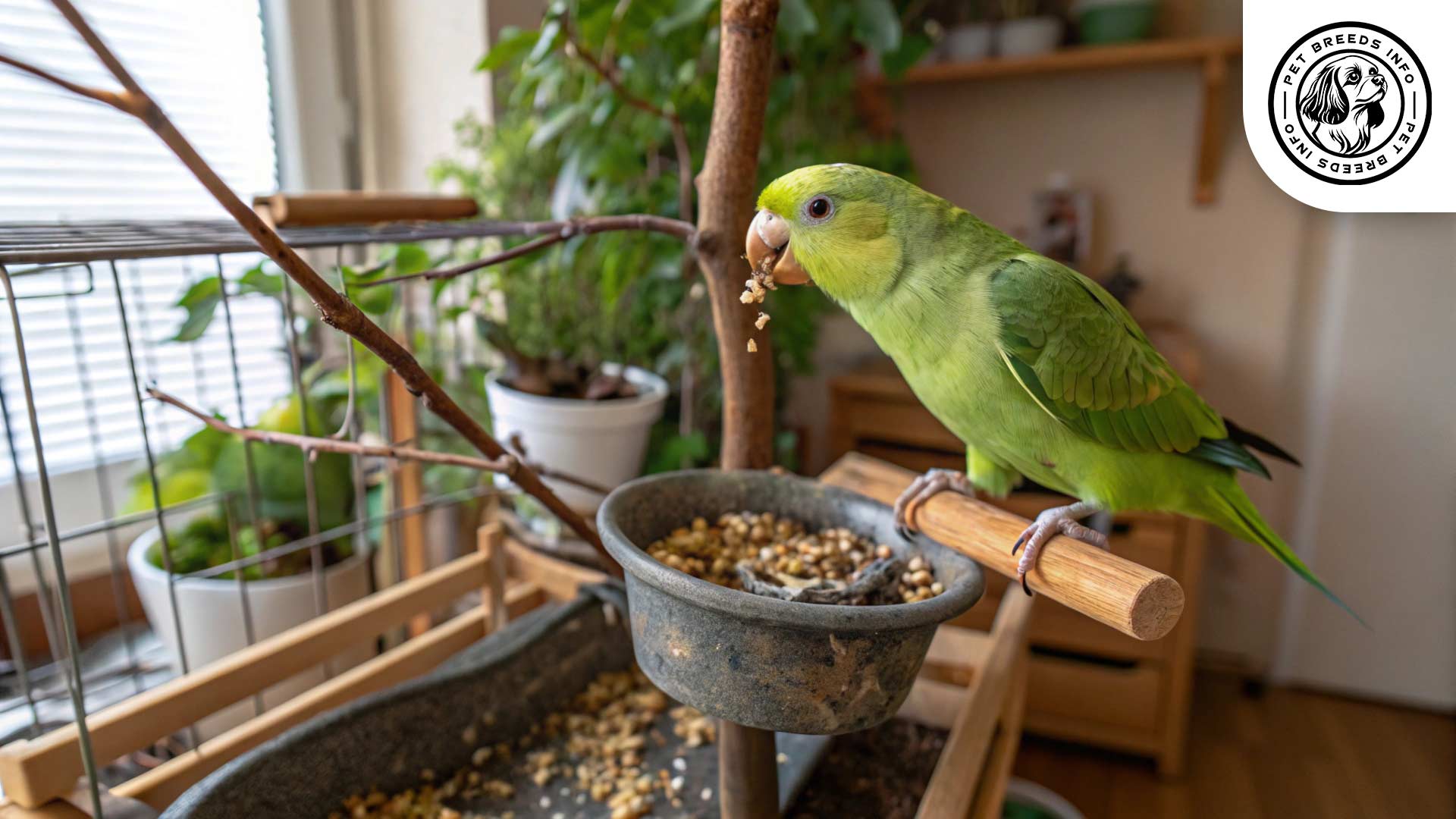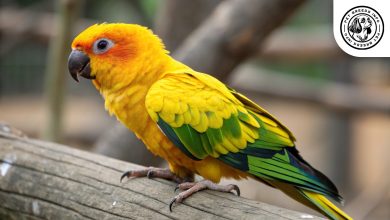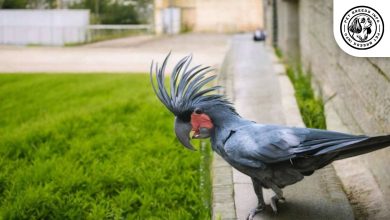Mexican Parrotlet Bird: Personality, Lifespan, Food & Care
General Introduction of the Breed
The Mexican Parrotlet (Forpus cyanopygius) is a small species of parrot native to Mexico. It is also known as the Green-rumped Parrotlet. This bird is found in tropical and subtropical regions of western and central Mexico. Mexican Parrotlets have been kept as pets for many years due to their charming personalities and manageable size.
Table of Contents
| Common Name | Mexican Parrotlet |
| Scientific Name | Forpus cyanopygius |
| Origin | Mexico |
| Size | 4.7–5.5 inches (12–14 cm) |
| Lifespan | 15–20 years |
| Colors | Primarily green, with blue markings in males |
| Talking Ability | Moderate (can learn basic words and sounds) |
| Noise Level | Moderate to low |
| Social Behavior | Social, can be territorial if not properly socialized |
Physical Characteristics
Mexican Parrotlets are small birds, typically measuring between 12 to 14 cm (4.7 to 5.5 inches) in length. They weigh around 30 to 35 grams, with males being slightly larger than females. Their plumage is primarily green, with males displaying blue markings on their wings and rump. Females tend to lack these blue markings and have a more uniform green coloration. They have small, dark eyes, a short tail, and a strong, curved beak ideal for cracking seeds.

Personality and Temperament
Mexican Parrotlets are intelligent and inquisitive birds. They are known for their playful and curious nature, often engaging with toys and interacting with their owners. While they are energetic, they also enjoy bonding with their human companions and can form strong attachments. They are social birds but can sometimes display territorial behavior, especially if not properly socialized from a young age. They are best suited for owners who can provide regular interaction and mental stimulation.
Care and Maintenance Requirements
Mexican Parrotlets require daily exercise and stimulation. Providing a spacious cage with plenty of toys, perches, and climbing structures is essential. They do well in both apartments and larger homes, as long as they receive enough interaction and exercise. Grooming includes trimming their nails and providing baths or misting to maintain healthy feathers. They are generally hardy birds but should be kept in a stable environment, away from extreme heat or cold.
Read More: Duclair Duck
Diet and Nutrition
A balanced diet for Mexican Parrotlets includes high-quality bird pellets, fresh fruits, and vegetables. They also enjoy seeds in moderation, as excessive seed consumption can lead to obesity. Foods to avoid include chocolate, avocado, caffeine, and high-fat or salty foods. Feeding two small meals per day, along with fresh water, ensures they receive proper nutrition.

Health and Common Medical Issues
Mexican Parrotlets are generally healthy but may be prone to respiratory infections, feather plucking due to stress, and vitamin deficiencies if not given a balanced diet. Regular veterinary check-ups and a clean living environment help maintain their well-being. Their average lifespan ranges from 15 to 20 years with proper care.

Training and Behavior Management
Training a Mexican Parrotlet is relatively easy due to their intelligence. Positive reinforcement techniques, such as treats and verbal praise, work well. Early training and socialization are essential to prevent aggressive or territorial behavior. These birds can learn tricks and basic commands through patience and consistency.
Read More: Blue Swedish Duck
Interaction with Other Animals and Humans
Mexican Parrotlets are social but can be territorial around other birds, especially if they are not raised together. They usually bond closely with their owners and can be affectionate companions. They do well with gentle children who understand how to handle small birds. They are better suited for families or individuals who have time to interact with them regularly.
Price and Availability
The cost of a Mexican Parrotlet can range from $100 to $300, depending on factors like age, coloration, and breeder reputation. When adopting or purchasing, it is essential to choose a reputable breeder or adoption center to ensure a healthy and well-socialized bird. Potential owners should look for signs of good health, such as bright eyes, clean feathers, and an active demeanor.
Conclusion and Final Thoughts
The Mexican Parrotlet is an excellent choice for those looking for a small, intelligent, and affectionate pet bird. They require proper attention, training, and a nutritious diet to stay healthy and happy. Suitable for both individuals and families, these birds thrive in homes where they receive plenty of interaction and mental stimulation. Potential owners should be prepared for a long-term commitment, as Mexican Parrotlets can live for over a decade.
Read More: Sumatra Chicken
FAQ
What makes Mexican Parrotlets unique?
They are small, intelligent birds with vibrant personalities and moderate talking ability, making them ideal for small living spaces.
Can Mexican Parrotlets talk?
Yes, they can learn basic words and sounds, although they are not as vocal as larger parrots.
How much space does a Mexican Parrotlet need?
A spacious cage with perches, toys, and climbing structures is essential, along with daily out-of-cage time for exercise.
Are Mexican Parrotlets good for families with children?
They are social and affectionate, but they do best with gentle children who understand how to handle small birds.
How much does a Mexican Parrotlet cost?
The price typically ranges from $100 to $300, depending on age, color, and breeder.





